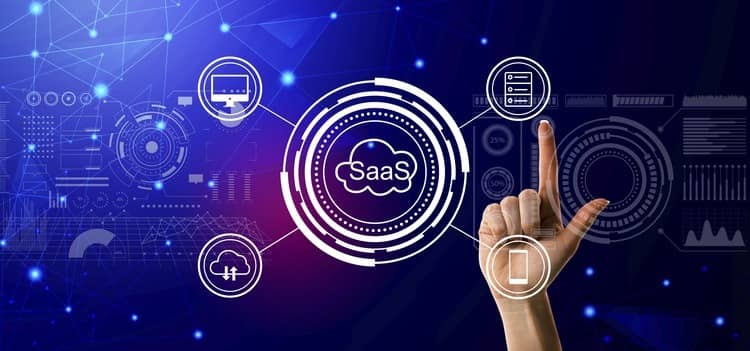The journey of growing your SaaS business application can be a daunting task, especially different approaches and considerations to keep in mind.
Technical challenges such as performance bottlenecks, scalability limitations, and the absence of proper hosting solutions can impede the seamless operation of your SaaS application, hindering user experience and growth potential. Without a strategic marketing approach and data-driven decision-making, reaching your target audience and making informed product improvements becomes a shot in the dark. The last thing you want is to miss opportunities, have stagnant user adoption, and an application with great potential but low underutilisation
After reading this article, you will learn how to understand your SaaS application’s growth, enabling you to design and deploy your Laravel SaaS product effectively. We’ll walk you through how to optimize your Laravel codebase for scalability, ensuring seamless growth as your user base expands. By implementing these strategies, you will discover how to drive significant growth for your SaaS application, unlocking its full potential in the market.
What aspects do you need to consider while scaling your Laravel SaaS application?
Choosing the right SaaS architecture for your business
SaaS architecture refers to the design and structure of the underlying software and infrastructure that enables the delivery of these applications.
The term “tenant” in SaaS refers to individual customers or user groups who share the same instance of the software while maintaining data isolation and customisation options. SaaS architectures are designed to be multi-tenant, allowing providers to efficiently scale and offer cost-effective solutions to a broad user base. This approach not only optimizes resource utilization but also enhances scalability and security, making it ideal for SaaS applications, as outlined by Qrvey in their discussion on multi-tenant SaaS architecture. Tenancy in SaaS involves segregating user data, configurations, and access controls to ensure a secure and personalised experience for each tenant, while still benefiting from shared resources and centralised maintenance. This architecture facilitates seamless updates, improved scalability, and a more cost-effective deployment model for both SaaS providers and their diverse user community.

- What is single-tenant architecture?
Single-tenant, refers to an architecture where each customer or organisation has its own dedicated instance of the software application, ensuring complete isolation of data and resources. This contrasts with multi-tenant architectures, where multiple users or organisations share the same instance.
For example, consider a financial institution using a single-tenant SaaS solution for customer relationship management (CRM). In this scenario, the financial institution has its exclusive instance of the CRM software, with individual databases, configurations, and resources. This ensures that sensitive financial data is isolated, meeting regulatory compliance and security requirements. The single-tenant architecture provides a customised and secure environment tailored to the specific needs of the financial institution without sharing resources with other organisations.
- What is multi-tenant architecture?
Multi-Tenant Architecture is an architectural approach in which a single instance of a software application serves multiple customers, known as tenants. Each tenant’s data and configuration are logically isolated from other tenants, providing a shared yet segregated environment. This approach is commonly used in cloud-based services, SaaS (Software as a Service), and other applications where multiple users or organisations share the same infrastructure and resources.
What are the types of multi tenant architecture?
- Silo architecture – In the silo model, tenants within a SaaS environment enjoy dedicated resources, such as independent infrastructure stacks or separate databases. Despite this isolation, a shared construct manages identity, onboarding, and operational experiences, differentiating it from a managed service model. Each tenant benefits from a fully independent infrastructure stack, preserving autonomy.
- Bridge architecture – The bridge model acknowledges the hybrid nature of many SaaS systems. It combines elements of both silo and pool models, allowing for flexibility. Some microservices may leverage dedicated resources in a silo model, while others utilize shared resources in a pool model. This hybrid approach accommodates diverse needs based on factors like regulatory requirements and service characteristics.
- Pool architecture – The pool model embodies classic multi-tenancy, where tenants share scalable resources like compute, storage, and database. This approach fosters economies of scale, enhanced manageability, and increased agility. Resources are commonly shared among tenants to achieve efficiency and cost-effectiveness in the SaaS architecture.
Below mentioned table carries the list of criteria that you need to consider when you are planning to choose your SaaS application’s architecture:
| Evaluating Criteria | Silo | Bridge | Pool |
| Data duplication and storage usage | high due to segregated data storage | Moderate, as Data duplication and storage usage vary depending on the level of integration | storage usage are minimized through centralized storage and shared resources |
| Infrastructure cost | Infrastructure costs are high due to the need for separate infrastructure for each silo | Infrastructure costs are moderate, as it requires some integration infrastructure but may still involve additional expenses for maintaining separate components. | Infrastructure costs are optimized as shared resources reduce the need for separate infrastructure components |
| Data isolation | Best | Better | Not efficient |
| Tenant-level availability, point-in-time recovery effort, backup and recovery effort, etc. | Least effort | Moderate effort | Significant effort |
| Administration overhead (for example, for database log analysis or backup job monitoring) | Significant | Minimal | Minimal |
| Database downtime for major version upgrades | Database downtime for major version upgrades is high, as each silo must be upgraded separately, leading to potential service disruptions. | Database downtime for major version upgrades is moderate, as upgrades may be coordinated across bridges, reducing the impact on overall availability. | Database downtime for major version upgrades is minimized, as upgrades can be applied to the shared pool |
| Tenant-level tuning (for example, creation of additional indexes per tenant or DB parameter tweaking for a particular tenant) | Possible | Somewhat possible | Not possible |
| Cross-tenant resource impact | No impact | Moderate impact | Heavy impact |
| Query performance management and effort | Manageable query performance. | Manageable query performance. | Significant query performance. |
| Change deployment effort | Minimal | Minimal | Very Large |
| New tenant onboarding agility | Very Slow | Moderate | Fastest option |
| Alignment with the business use cases | Full control of resource usage is imperative, especially when dealing with very large and highly performance-sensitive tenants, necessitating the isolation of their data. | The requirement is for isolation of data without or with minimal cross-referencing of tenants’ data, ensuring distinct data boundaries. | Manage a substantial number of tenants, each with a relatively small amount of data, optimising the overall system’s efficiency. |
| Database connection pool configuration effort and efficiency | Significant effort required | Significant effort required | Little effort required. |
Optimising Laravel codebase for scalability
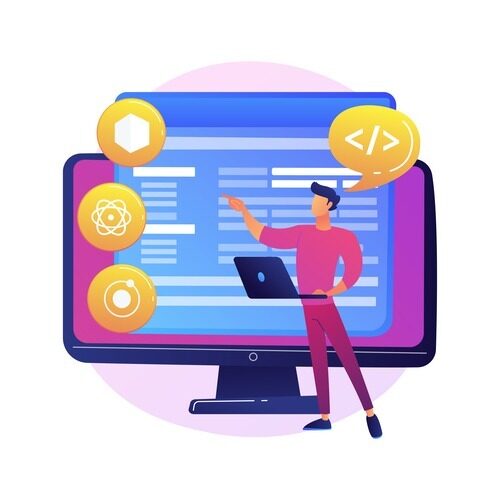
Unlike conventional applications, predicting the growth trajectory of a SaaS product can be challenging. Therefore, laying a robust foundation from the start is imperative, with a focus on accommodating variable customer loads and preparing for worst-case scenarios. Scalable infrastructure and performance optimisation are paramount, and a cloud-based approach, specifically autoscaling, is crucial.
Choosing the right hosting and server solutions, implementing effective caching mechanisms for enhanced performance, and instating a culture of continuous monitoring and infrastructure optimisation become pivotal aspects in ensuring the scalability of a Laravel-based SaaS application.
Some of the important points you need to make a note of:
- Ensure that your Laravel application is hosted on a scalable infrastructure, preferably cloud-based, to accommodate varying workloads efficiently.
- Leverage autoscaling capabilities to dynamically adjust resources based on demand, optimising performance and minimising downtime.
- Shape your codebase to be flexible, anticipating potential business domain expansions, even if the initial focus is narrow, to accommodate future growth seamlessly.
- Implement effective caching mechanisms within your Laravel application to enhance response times and reduce server load, improving overall performance.
According to the Laravel documentation, Laravel supports various caching backends like Redis, Memcached, and DynamoDB, allowing developers to choose the most suitable option for their application’s needs. With Laravel the switching of cache drivers becomes easier as you can also implement third party services like Redis, Elastic cache, DynamoDB, Memcached, etc.
- Establish a culture of continuous monitoring for your infrastructure, enabling prompt identification and resolution of potential bottlenecks or performance issues.
- Regularly optimise your codebase, database queries, and server configurations to ensure peak performance, especially during periods of heightened user activity or growth. Utilise packages like Laravel Telescope during the development phase to assess to enhance your application’s performance based on metrics. Enhance your application’s code quality by employing Static code analysers such as Laravel Pint. For a comprehensive guide on validating the code quality of your Laravel application, check out this article to efficiently carry out the validation process and gain valuable insights.
Ensuring robust security measures
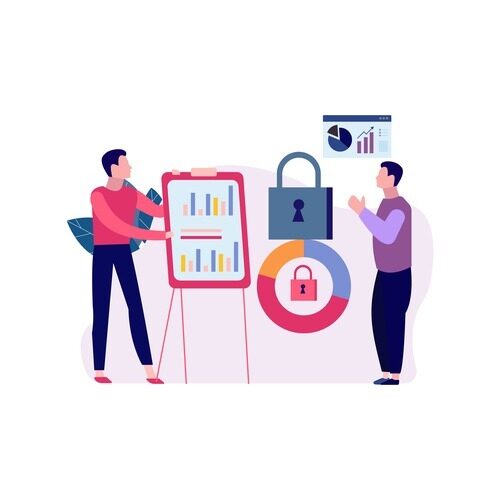
Ensuring robust security measures in your application is paramount, particularly when dealing with sensitive customer data. The significance of safeguarding against data leaks cannot be overstated in the context of a SaaS application, where the integrity and confidentiality of customer information are of utmost importance.
For SaaS applications, where multiple tenants share common resources, maintaining a strict separation of data is imperative. Data isolation safeguards sensitive information from unauthorised access, ensuring each tenant’s privacy and compliance with data protection regulations. As breaches can have cascading effects across tenants, robust security measures and stringent data isolation become inseparable elements for the success and trustworthiness of Multi-Tenant SaaS solutions.
To fortify the application against potential security pitfalls, a comprehensive and proactive security approach is essential. As recommended in Pentest-Tools’ Laravel security guide, best practices like two-factor authentication, data encryption, and strict input validation can significantly enhance your application’s protection. This involves implementing encryption protocols, robust authentication mechanisms, and regularly auditing and updating security protocols to stay ahead of evolving threats.
Do check out this article on common security pitfalls from which you can protect your Laravel application.
Promoting user-centric approach
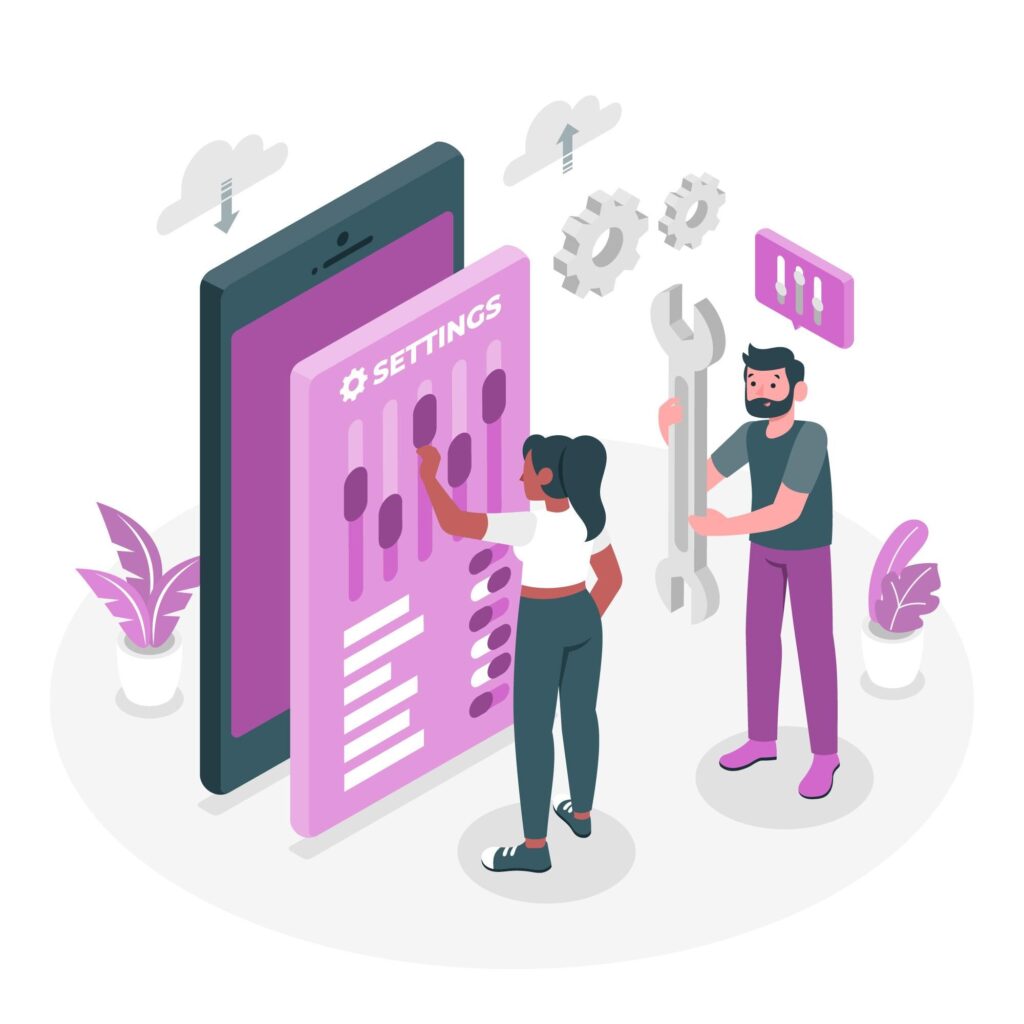
Embracing a user-centric approach in your application is pivotal for success, emphasising both an intuitive user interface (UI) and a seamless user experience (UX). The UI serves as the first impression, with clarity and simplicity at its core.
A visually appealing and intuitive interface not only attracts users but also contributes significantly to overall user satisfaction. Beyond aesthetics, the user experience is enriched by incorporating feedback loops, ensuring continuous improvement based on user input.
Laravel facilitates seamless integration of front-end frameworks like React and Vue.js, along with Tailwind CSS support. The official Tailwind documentation highlights how easily Tailwind CSS can be set up in a Laravel project to streamline intuitive UI development. This streamlines development, enhancing user interfaces and satisfaction, and fostering accelerated growth.
Do check out this article on how to evaluate the usability of your application for more insights.
Adopting effective marketing strategies
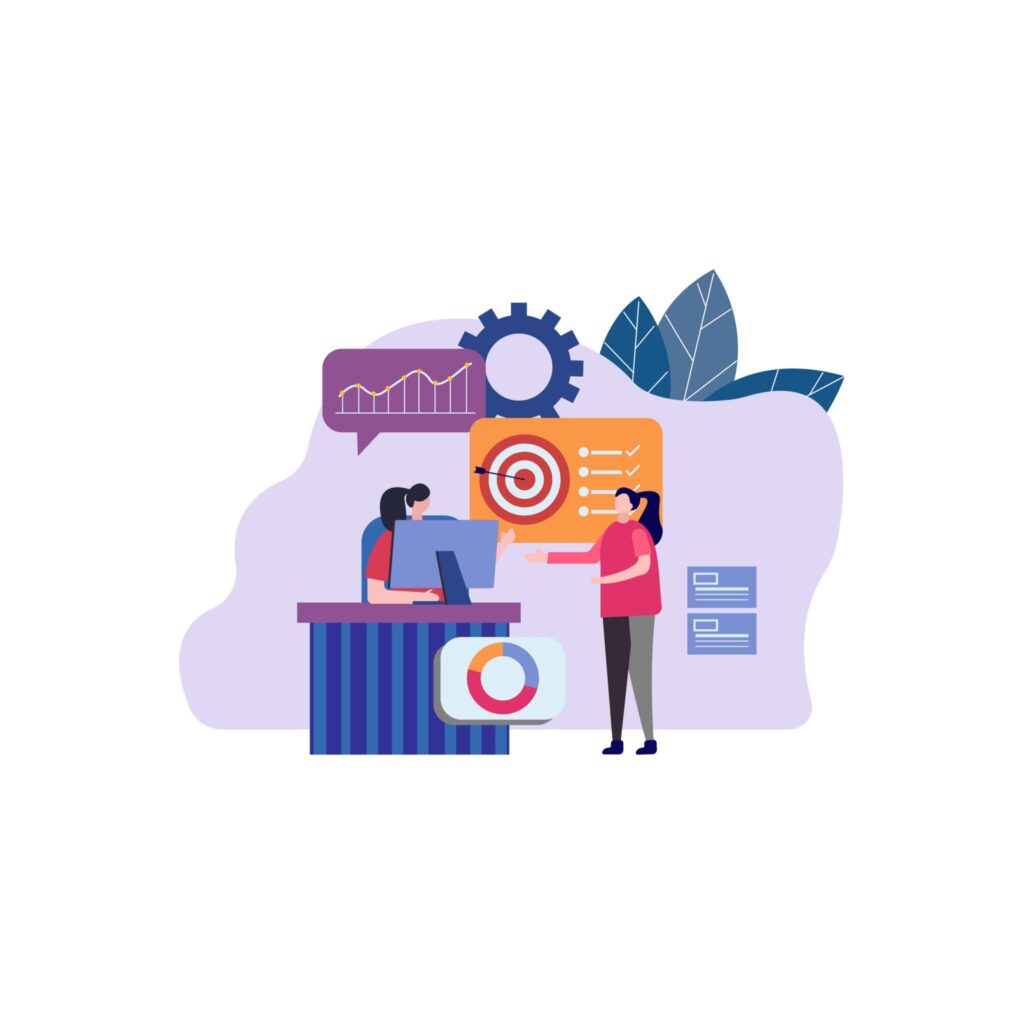
In the dynamic landscape of SaaS, effective marketing strategies play a pivotal role, with the development of a compelling value proposition standing out as a cornerstone. Crafting a value proposition that resonates with your target audience is more than just highlighting features; it’s about addressing the unique challenges and needs of your users.
A compelling value proposition articulates the distinct benefits and solutions your SaaS product brings to the table, setting it apart in a crowded market. It is the key to capturing the attention of potential customers and convincing them that your product is the solution they’ve been searching for.
Provided below are essential factors to keep in mind as you undertake the implementation of effective marketing strategies to cultivate the growth of your application:
- Conduct thorough market research to understand the specific pain points and needs of your target audience.
- Identify and articulate the unique features and benefits that set your application apart from competitors.
- Ensure that your value proposition is clear, concise, and easily understandable by your target audience.
- Frame your value proposition in a way that directly addresses and alleviates the challenges faced by your customers.
- Whenever possible, quantify the benefits your SaaS product brings, showcasing concrete improvements or efficiencies.
- Ensure that your value proposition aligns with your overall brand identity and messaging strategy.
- Maintain consistency in your messaging across various marketing channels to reinforce your value proposition.
- Integrate customer testimonials or case studies that validate the effectiveness of your SaaS product in solving real-world problems.
- Treat your value proposition as an evolving entity, open to iteration based on customer feedback and market dynamics.
- Regularly assess and adjust your value proposition based on changes in the competitive landscape, ensuring its ongoing relevance and effectiveness.
Have a data-driven decision-making approach

Adopting data-driven decision-making is integral to the success of your application, necessitating the implementation of robust analytics tools for comprehensive user behaviour analysis. Harnessing the power of data empowers you to make informed choices, identify trends, and respond to user behavior with precision. This subsection delves into the pivotal role of data in steering the trajectory of your SAAS product.
Presented below are crucial considerations to bear in mind as you embark on implementing effective data-driven decision-making processes to nurture the growth of your application:
- Set up robust analytics tools like Google Analytics, Mixpanel, Heap Analytics and Hotjar to track and analyse user behavior, enabling data-driven insights into user engagement and preferences.
- Utilise data insights to drive ongoing product improvements, ensuring your Laravel application evolves to meet user needs and expectations.
- Establish channels for collecting user feedback, and incorporating user suggestions into the development roadmap for continuous improvement.
- Prioritise data security and privacy, implementing measures to safeguard user data and adhere to relevant regulations.
Make the best use of the Laravel ecosystem
To maximise the growth of your Laravel SAAS product, tapping into the extensive Laravel ecosystem is paramount. Laravel offers a vast array of packages designed to streamline and enhance various aspects of your application. Leveraging these packages can significantly expedite the development process and elevate the functionality of your SAAS product.
The following areas highlight common scenarios where leveraging packages from the Laravel ecosystem can prove beneficial:
- Payment and subscription roles – Leverage the robust Laravel ecosystem for seamless payment and subscription management. Utilise Laravel’s built-in features to define and manage user roles, enhancing control over access and permissions.
- Payment packages integration – Explore payment packages that seamlessly integrate with renowned platforms like Paytm and Paypal. These packages streamline the integration process, making transactions secure and user-friendly, thereby contributing to a positive customer experience.
- Testing tools for reliability – Ensure the reliability of your Laravel SaaS product by incorporating powerful testing tools. Laravel PEST, PHP Unit, and Dusk are indispensable for thorough testing, covering unit tests, browser compatibility, and ensuring the overall stability of your application.
- Real-time communication with Broadcasters – Enhance user engagement through real-time updates using Laravel’s broadcasting capabilities. With the help of sockets, Laravel facilitates real-time packages that enable instant communication and updates, providing users with a dynamic and interactive experience. Integrating broadcasters enhances the overall responsiveness of your SaaS product, fostering user satisfaction and retention.
These insights offer just a glimpse into the myriad possibilities within the Laravel ecosystem. Beyond streamlined payment integration and robust testing tools, Laravel packages find diverse applications. Examples include scalable API development with Dingo, efficient task scheduling using Laravel Task Scheduling, and simplified user authentication via Laravel Passport. The Laravel ecosystem continues to evolve, presenting a vast array of packages for developers to explore and tailor to their specific needs, ensuring a versatile and dynamic foundation for SaaS product growth.
For more insights about the different types of packages provided by Laravel, check out this article on the best authentication method in Laravel.
Future-proofing your Laravel SaaS product
This is not merely a strategy; it’s a commitment to staying at the forefront of technology and market trends. This involves a dynamic approach to adapting to emerging technologies, ensuring that your application remains relevant and competitive. Regularly updating and innovating features based on user feedback and evolving industry demands is a cornerstone of future-proofing.
Building a comprehensive roadmap for sustained growth provides a strategic guide, allowing your Laravel SaaS product to navigate the ever-changing landscape with agility and foresight. Given Laravel’s proactive release cycle, staying tuned to and leveraging the latest updates enhances the product’s capabilities and security, contributing to its longevity and continuous evolution in the market.
What role does scalability play in the growth of your Laravel SaaS product?
Maximising the growth of your Laravel SaaS product requires a strategic blend of technical expertise, user-centric approaches, proactive sales, and marketing strategies for enhancing brand awareness and authority, etc. Scalability plays a crucial role in the growth of a SaaS application, making it imperative to choose the right architecture approach and optimise a codebase that promotes seamless expansion.
Achieving sustained success involves a comprehensive approach, encompassing the implementation of strong security measures and the adoption of impactful marketing strategies. The combination of data-driven decision-making and a focus on user needs serves to advance your product’s position within the competitive landscape.
For more insights on scaling your Laravel application, be sure to check out our detailed article on proven strategies for optimal scalability.
Still, unsure about your next step? Feel free to reach out to our team.
Your queries, our answers
Yes, we can continue developing your existing Laravel application. Please provide the current project details so we can assess and proceed. For more details, get in touch with our team.
No, we focus on custom Laravel solutions tailored specifically to your needs. We do not offer pre-built, off-the-shelf products.
Yes, we develop Laravel applications for various domains, including e-commerce, healthcare, finance, and more.
The cost varies based on the project's complexity and scope. For a basic MVP, costs generally range from $20,000 to $40,000 for web apps and $10,000 to $25,000 for mobile apps. For more advanced applications, costs can be higher. We offer a detailed cost breakdown tailored to your specific needs. To know more, check out our article on How much does it cost to work on a Laravel project with Mallow? and discover how we can build a strong partnership together.
The timeline depends on the project's complexity. A basic project may take a few weeks, while more complex applications could take several months.
Yes, we can align our working hours with your time zone to facilitate effective communication throughout the development process. For more details on how you can handle timezone differences efficiently, do check out our article on how to handle timezone differences while working with an offshore development team.
Mallow offers the following outsourcing models: Project-based outsourcing, Staff augmentation, & Dedicated development team (DDT)
Yes, we offer maintenance and support services to ensure your Laravel application remains up-to-date and functional.
Yes, you will own the intellectual property rights of your Laravel application upon project completion. Check out our article on why owning intellectual property rights while outsourcing your application is important.
The cost is influenced by several factors including the complexity of the project, the number of features required, and whether the application is for web or mobile. We provide a personalized estimate based on your project details.
We work with the latest stable versions of Laravel and can also support older versions if needed based on your project requirements. For more details check out our article on Laravel upgrade: when and how to transition to the latest version
Yes, we offer post-deployment support to address any issues and provide updates as needed.
To hire a Laravel developer from Mallow, you can contact us with your project requirements. We'll discuss your needs, suggest suitable developers or teams, and provide you with a proposal. Once the terms are agreed upon, we can start the development process.
Yes, you can hire a dedicated Laravel developer or a team of developers from Mallow. This allows you to have a dedicated resource working exclusively on your project, providing more control and flexibility over the development process.
To hire the right laravel developer for your project, check out this article on tips to hire the right Laravel developer.
Author
Manivel
Manivel is the Chief Technology Officer (CTO) at Mallow Technologies, with over two decade of experience in the field of application development. His driving vision when co-founding Mallow was to empower businesses to unlock their potential through the strategic utilisation of technology. Over the years, he has solidified his reputation as a reliable technical partner and advisor to clients spanning various sectors. Manivel's unique proficiency in ideating and delivering customised application solutions has played a transformative role in facilitating the success of numerous enterprises amidst the ever-evolving digital landscape.

